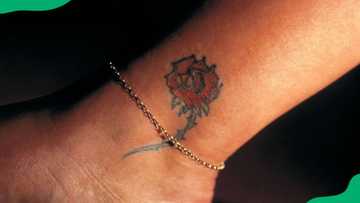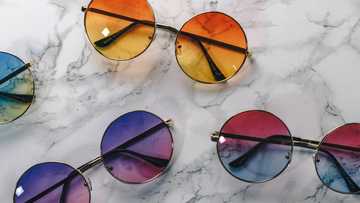How to tell if gold is real: simple DIY tips to verify your gold
Gold is one of the most valuable and sought-after metals by humankind. Its shiny yellow texture and its ability to be shaped make it a favourite for crafting jewellery. However, because it is expensive and highly inadequate, it is prone to faking, and there have been numerous stories about people getting scammed. Here is how to tell if gold is real at home to avoid such a thing.
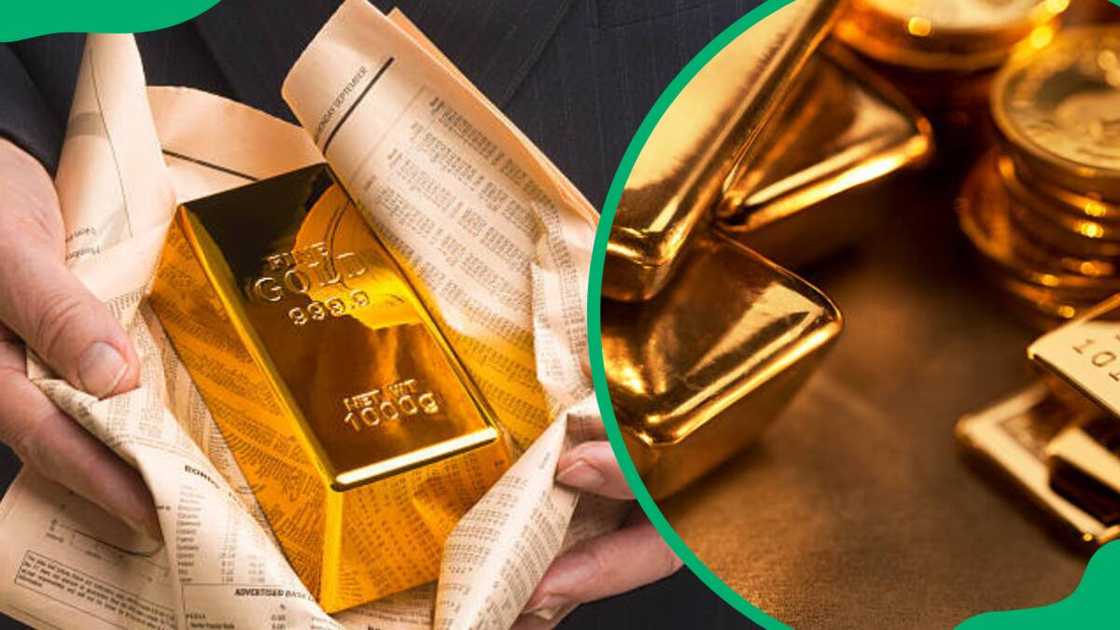
Source: UGC
TABLE OF CONTENTS
- How to tell if gold is real
- 1. Use a magnifying glass
- 2. Look for letter markings
- 3. Rub against your skin
- 4. Size and weight
- 5. Try with a magnet
- 6. Scratch your gold against a piece of tile
- 7. Use vinegar
- 8. Water test
- 9. Test gold with lighter
- What are the common base metals used for gold alloys?
- Is white gold real?
- What are the signs of fake gold?
- What if my gold is not stamped?
Due to the ever-increasing price and demand for gold, there is a vast black market for it across the globe. Because of its value, cheap jewellery can be made to look more expensive if it appears to contain gold, even if it is fake. Discover how to check if gold is real.
How to tell if gold is real
If you recently found a piece of gold or a piece of jewellery, you are probably wondering how to tell real gold. Learn how to tell if a gold ring is real and your jewellery is real or fake.
1. Use a magnifying glass
A magnifying glass helps you look for hallmarks. A hallmark is a stamp engraved in a piece of jewellery to identify its content or manufacturer. The stamps are usually displayed discreetly, such as on the inside of a ring.
The purity scale standards are based on karats and millesimal fineness. The fineness of the metal object represents the weight of the fine metal therein in proportion to the total weight, which includes base metals and any impurities.
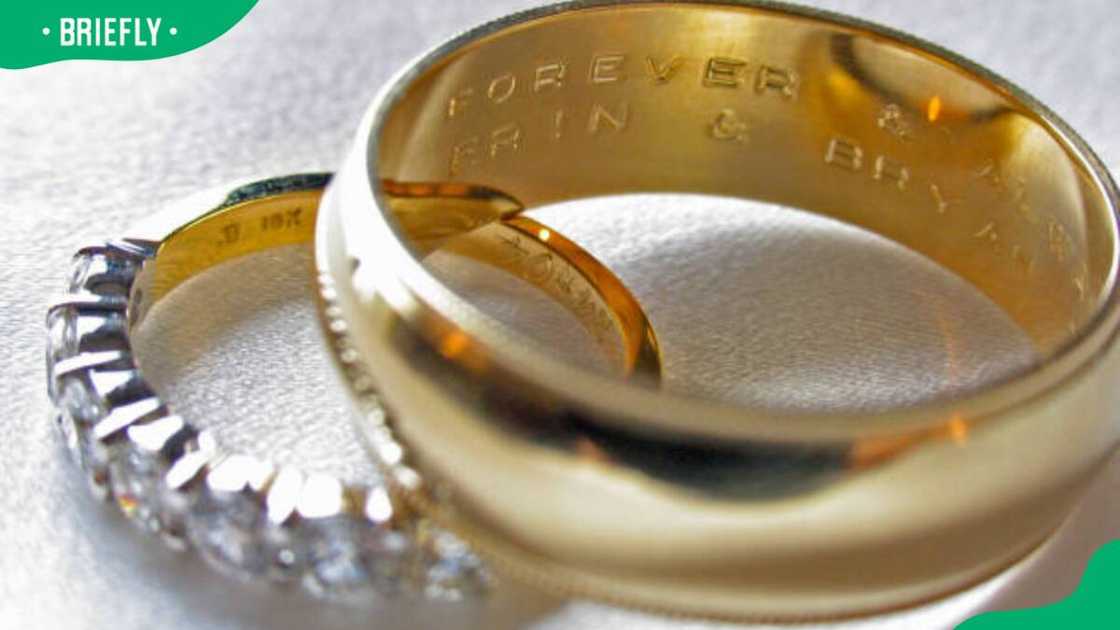
Source: Getty Images
2. Look for letter markings
Any gold marked less than 10k (41.7% purity) is considered fake. If you encounter letters such as:
- GP – Gold Plated
- GF – Gold Filled
- GE – Gold Electroplated
- GEP – Gold-Electro Plated
- HGP – Heavily Gold Plated
These markings indicate that the manufacturer has only coated the item with a thin layer of gold. It is unusual to find 100% pure gold as it is a very soft metal and would not be as durable as jewellery. 24k gold is 99.9% pure, while 18k is 75% pure.
3. Rub against your skin
Hold the gold between your hands for a few minutes to see if your skin discolours. If you encounter a bluish or greenish tint, that is fake. Gold is a non-reactive element, and a real one will never discolour your skin.
Gold is a hypoallergenic metal, making it an excellent choice for people allergic to metal. For this test method to be effective, remove all makeup before the test.
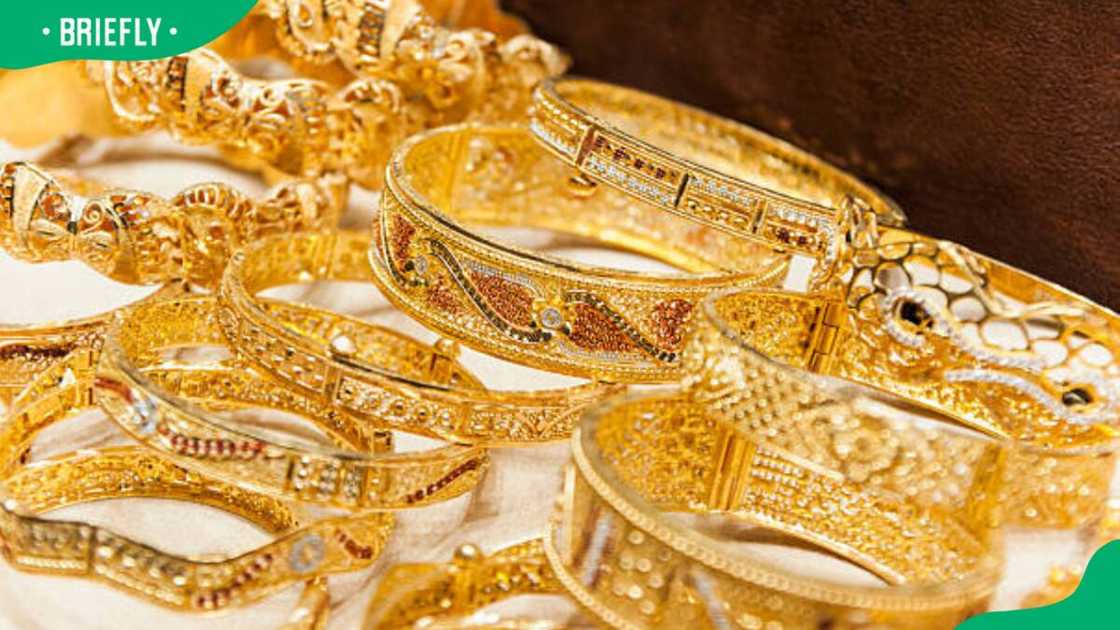
Source: Getty Images
4. Size and weight
Gold is denser than most known metals; therefore, if you have a piece that feels too light for its size, you probably have a fake one. When weighing, use a digital scale to produce more accurate results. Gold-coated pieces can also be similar in size and weight because they are made of a solid base.
5. Try with a magnet
Does real gold stick to a magnet? Real gold does not react to a magnet; if you have any reaction, it means it is fake. Gold-plated metals tend to be non-reactive, so this method is not 100% foolproof.
Using a magnet is an ideal way to tell if unmarked gold is real. Use a strong magnet for this test; otherwise, you might not get an accurate result.
6. Scratch your gold against a piece of tile
Scraping most metals across a ceramic plate leaves a black trail, unlike gold, which leaves a gold mark. Use an unglazed ceramic as it will not show the colour of the metal as clearly. Also, scrap your piece gently, as you may not want to damage it.
7. Use vinegar
Vinegar is very destructive, so when you put a few drops of vinegar into gold, it should not react as gold is a non-reactive metal. You will see a change in colour if it is fake. However, you need to be in an inconspicuous place.
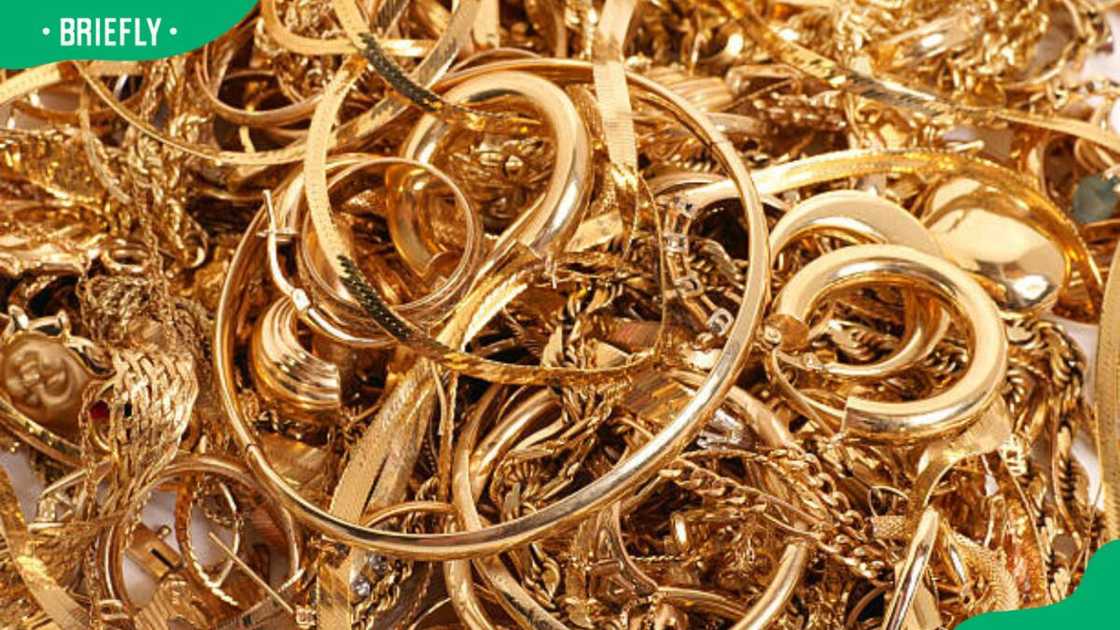
Source: Getty Images
Tips for using vinegar:
- Use distilled white vinegar, as other types may be less effective.
- Apply the drops of vinegar to discreet parts like the back of it. If it is fake, it will not ruin the appearance of your jewellery.
8. Water test
Drop a piece of your gold into a container of water. Since the gold is dense, it should sink, but if it floats or is slow to sink, it indicates its fakeness. However, this test is not always dependable as some fake gold is heavy and will sink to the bottom. Real gold does not rust or tarnish when wet, so if you see a discolouration, you probably have plated gold.
9. Test gold with lighter
Try to burn your gold, and if it is real, the piece will get brighter as it burns. You have a fake piece of gold if your piece starts to smoke or gets darker. If your piece has gold plating, the coating will melt, and the darker metal will be revealed underneath.
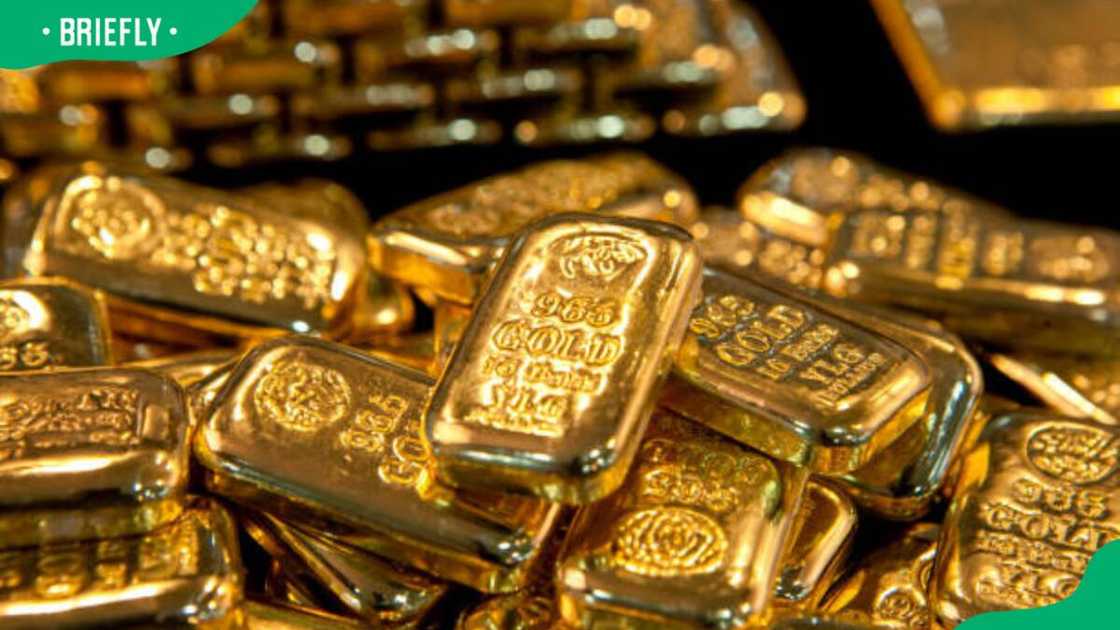
Source: Getty Images
Tips for using a lighter
- Use a butane lighter to enhance an intense and stable flame that you can control.
- Heat the piece for about one minute.
- Handle with inflammable tools like tongs or pliers.
What are the common base metals used for gold alloys?
A gold alloy is a mixture of metals combined with real gold. Silver and copper are the most common metals used to make alloys; titanium and palladium are also used.
Is white gold real?
Real gold is yellowish. Therefore, white gold is an alloy mixing real gold with white metals such as silver and palladium.
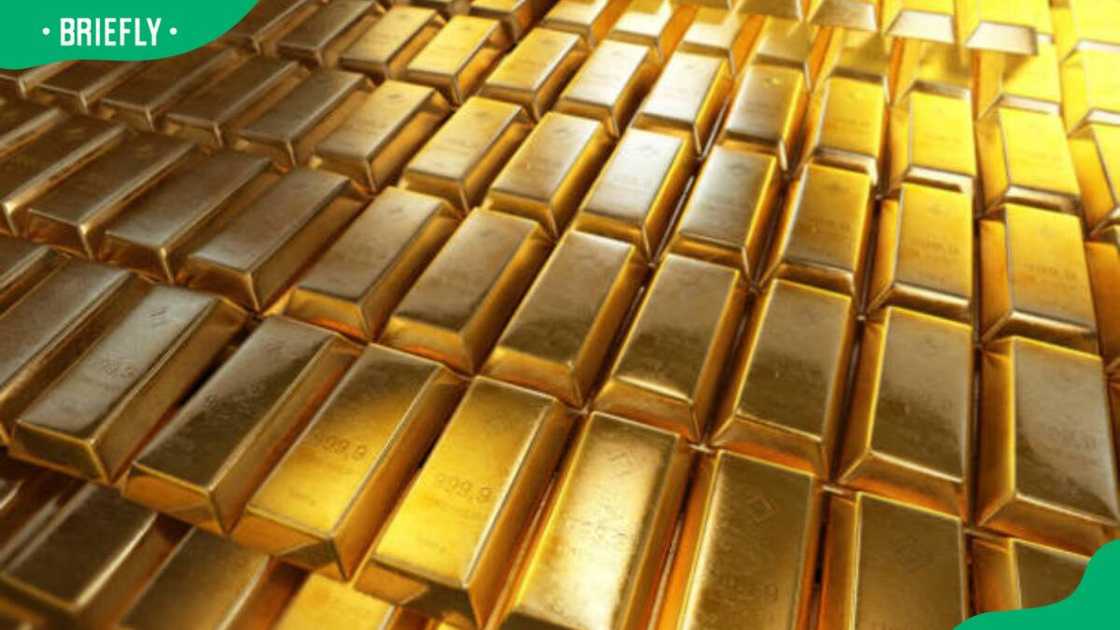
Source: Getty Images
What are the signs of fake gold?
Differentiating between fake and real gold is essential to avoid scams and ensure the value of your possessions. Some of the signs of fake gold include:
- There are no hallmarks of authenticity.
- It is lighter in weight.
- Tarnishes and discolours over time.
- Exhibits signs of wear and tear
What if my gold is not stamped?
If the stamp is absent, this could mean it is fake. However, other possible explanations exist, such as the hallmark being worn away due to constant contact with the skin. The jewellery could also be old; maybe the piece was made before hallmarking.
With the above information on how to tell if gold is real, you are best suited to make the right judgement when buying gold jewellery. For the most tried and sure methods, you must take your gold to an expert jeweller who will use more elaborate ways like loupe, X-ray fluorescence or an electronic gold tester.
READ ALSO: 30+ creative DIY Valentine's Day gifts for him and her
Briefly.co.za published an article about creative DIY Valentine's Day gifts. Valentine's presents mean so much when they come from loved ones, so going for the best DIY ideas is essential.
Whether for your partner, family, or friends, there are hundreds of gift ideas from which you can choose, and they will convey the message of how important the person is to you. Discover the best creative gifts for him and her.
Source: Briefly News



